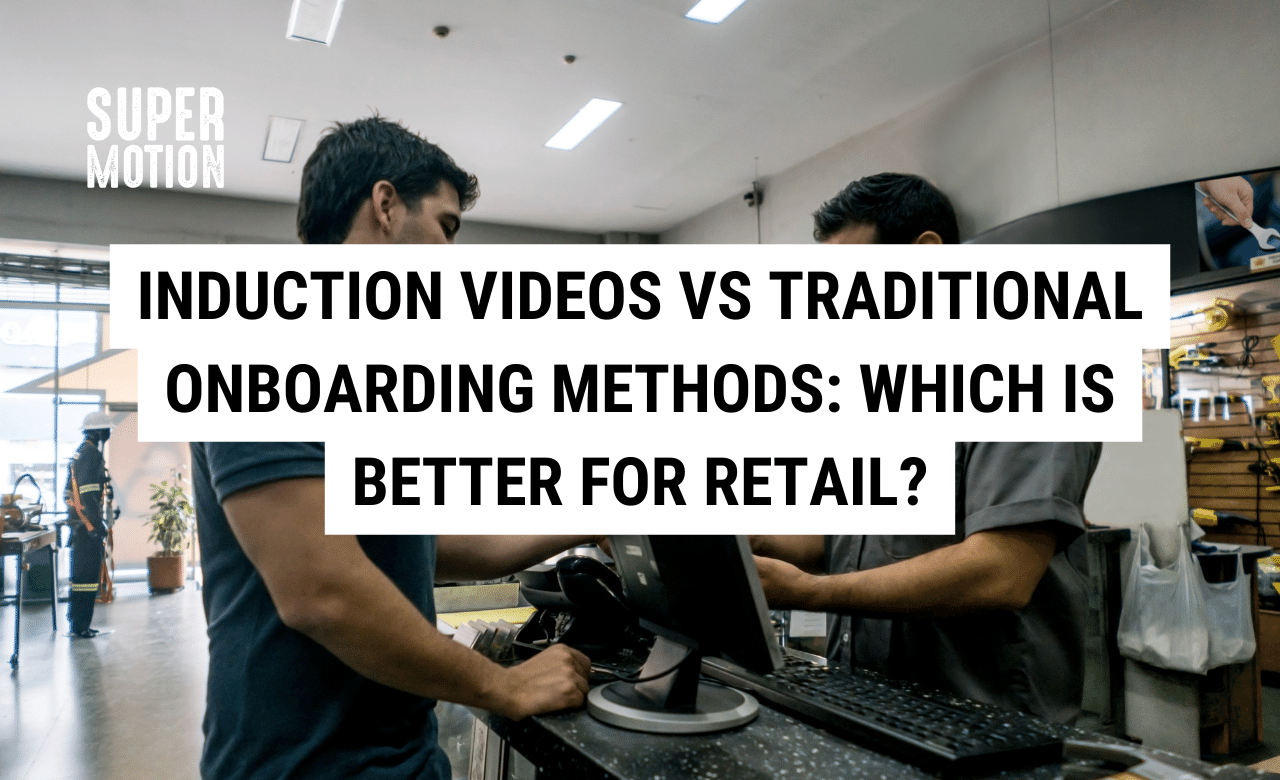Induction Videos vs Traditional Onboarding Methods: Which is Better for Retail?

The retail industry is known for its high employee turnover rate, which can be attributed to a number of factors, such as seasonal hiring, pay scales, job stress, and other issues. It’s no secret that the cost of hiring and training new employees can be substantial, which is why onboarding programs are crucial to the success of retail operations.
However, there can be a more cost-effective and efficient way to onboard employees: induction videos.
In this article, we will explore the advantages and disadvantages of both traditional onboarding methods and induction videos, specifically in the retail industry.
Induction Videos

Cost Savings
One of the major benefits of induction videos is that they save the costs associated with instructor-based sessions. This is because induction videos can be created once and used numerous times, as opposed to traditional onboarding methods, which require an instructor to be present each time there is a new hire.
Consistent Message Every Time
Another significant benefit of using induction videos is that it ensures consistent messaging is delivered to every new hire, regardless of who is conducting the induction, resulting in much clearer messaging for all.
Tailored Onboarding Experiences
Induction videos also offer more flexibility than traditional onboarding methods. They can be tailored to specific audiences by using a variety of styles, formats, and contents to meet specific needs, such as seasonal staff vs full time staff.
Long Shelf Life
Induction videos offer a great ROI since they can be used for a long time. It reduces the need for regular updating as is the case with printed materials.
Interactive and Engaging
With today’s video technologies, there is a range of interactive features that can be added to induction videos to make them more engaging and informative to employees. The use of animations, infographics and other graphical elements ensures that the induction experience can be immersive and engaging for the new employees.
Available Anytime, Anywhere
Induction videos provide on-demand availability, and new hires can view them around other induction activities, reducing the impact on time and resources required to onboard a new member of your team.
Can be Tailorable to Different Roles
With induction videos, employees from different divisions and departments can undergo separate induction programmes tailored to their roles and needs. This can improve specific learning goals for each employee and improve efficiency.
Reduction in Printed Materials
Induction videos eliminate the need for printed materials, which is typically a more environmentally friendly option. It also allows for easy digital sharing over various platforms.
Traditional Onboarding Methods

Face-to-Face Interactions Can Help Develop Relationships
Traditional onboarding allows for face-to-face interactions between new employees and their colleagues, which can foster relationships and a sense of community among employees that can be difficult to replicate in a virtual environment.
Allows for Tailored Goal and Target Setting
In a physical classroom or workshop environment, it’s easier for trainers to establish a rapport with new hires and discuss their goals and aspirations, which can be beneficial for their professional development and retention.
Buddying to Offer Support
The buddy system is another common traditional onboarding method used to create a community feeling and provide support to new employees during their transition period.
Structured to Build Trust with New Employees
Traditional onboarding programs are often structured to build trust between the organisation and new hires to ensure that they feel welcome, safe, and valued at their new place of employment. This can result in higher motivation and job satisfaction.
Can be Costly
Traditional onboarding methods can be costly in retail, where high employee turnover rates are prevalent. The expense of hiring and training employees can be substantial, and the need for seasonal staffing can further compound those costs since more resources may be required to handle larger groups of new hires.
Moreover, traditional onboarding can present challenges when hiring large numbers of temporary seasonal workers, who may not be around for an extended period.
Conclusion
When it comes to onboarding new hires in the retail industry, it’s clear that induction videos offer many advantages over traditional methods. They are cost-effective, customisable, and provide consistent messaging.
However, it’s important to note that traditional onboarding methods can foster strong community relationships, goal setting and build trust.
Rather than seeing video inductions as a replacement for traditional methods, consider how you could combine both for a greater onboarding experience for your new employees.
To explore how induction videos could compliment your existing onboarding process, book a strategy call or get in touch on 01225 970242.
